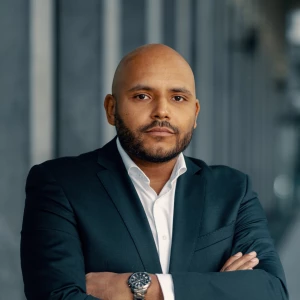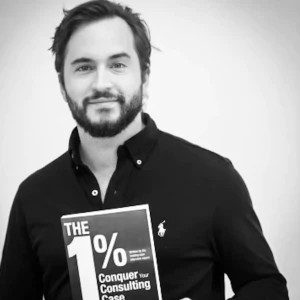For the calculation on break-even number in this case, I understand that we're capitalizing the required investment for equipment as an assest, and consider the depreciation expense as a fixed cost in this case. However, as it's highly likely that the investment for equipment must be fully paid in the first year, it could also be considered as a fixed cost in first year, which will change the answer of break-even amount. That being said, it will take the company several years to break even, and we will need to come up with a timeline, which will make the calculation more complicated. Does this approach make sense in this case? Or are supposed to capitalize the investment expenditure by default and only consider the depreciation expense in case interviews?
The break-even calculation: do we want to consider timeline of break-even


Hello!
Precisely for the high amount of questions (1) asked by my coachees and students and (2) present in this Q&A, I created the “Math & Formulas - Economic and Financial concepts for MBB interviews”, recently published in PrepLounge’s shop (https://www.preplounge.com/en/shop/prep-guide/economic_and_financial_concepts_for_mbb_interviews).
After +5 years of candidate coaching and university teaching, and after having seen hundreds of cases, I realized that the economic-related knowledge needed to master case interviews is not much, and not complex. However, you need to know where to focus! Hence, I created the guide that I wish I could have had, summarizing the most important economic and financial concepts needed to solve consulting cases, combining key concepts theorical reviews and a hands-on methodology with examples and ad-hoc practice cases.
It focuses on 4 core topics, divided in chapters (each of them ranked in scale of importance, to help you maximize your time in short preparations):
- Economic concepts: Profitability equation, Break even, Valuation methods (economic, market and asset), Payback period, NPV and IRR, + 3 practice cases to put it all together in a practical way.
- Financial concepts: Balance sheet, Income statement/P&L and Performance ratios (based on sales and based on investment), +1 practice case
- Market structure & pricing: Market types, Perfect competition markets (demand and supply), Willingness to pay, Pricing approaches, Market segmentation and Price elasticity of demand, +1 practice case
- Marketing and Customer Acquisition: Sales funnel, Key marketing metrics (CAC and CLV) and Churn, +1 practice case
Feel free to PM me for disccount codes for the guide, and I hope it helps you rock your interviews!


Hello Ashley ,
Your point is fair and the interviewer would be happy to see that a candidate has such a critical reasoning.
In this case considering the depreciation as a fixed cost in the case is just a "mathematical trick" to simplify the calculation. I don't get why this would change the final solution, you could consider the 5-years period that will be repeat in the time with the same dynamic:
- First year P/L calculation: (Price – VC) * amount - overhead - investment
- 2-5 years P/L calculation: (Price – VC) * amount - overhead
- Total profit/loss calculation= "First year P/L" + 4* "2-5 years P/L"= 5* ((Price – VC) * amount - overhead ) - investment
Now you have to put this final expression equal to 0 and you have:
- 5* ((Price – VC) * amount - overhead ) - investment = 0
- Dividing by five --> (Price – VC) * amount - overhead - investment / 5 = 0
And this final expression is the same of the official solution ;)
I know that talking about math with this answer's format could be confusing, contact me if you need more help and I will explain you step by step using a proper visual.
Please notice that you could also take into account the NPV of each cash flow but this would over complicate the case (99% of interviewer will ask you not to consider that). BUt again, state clearly to your interviewer that you could also consider the NPV, he will be happy to know that you thought about this complication.
Hope it helps,
Luca












